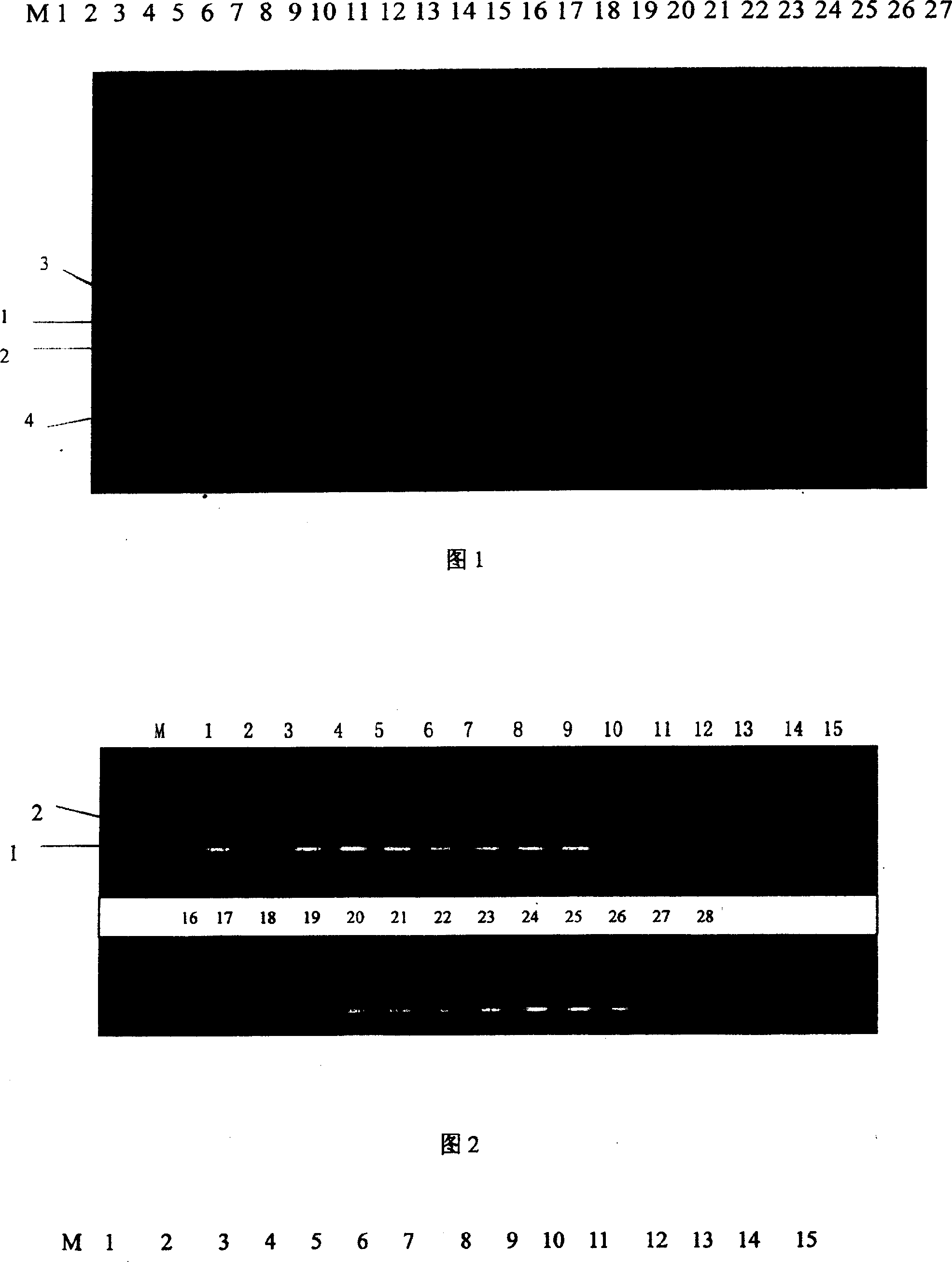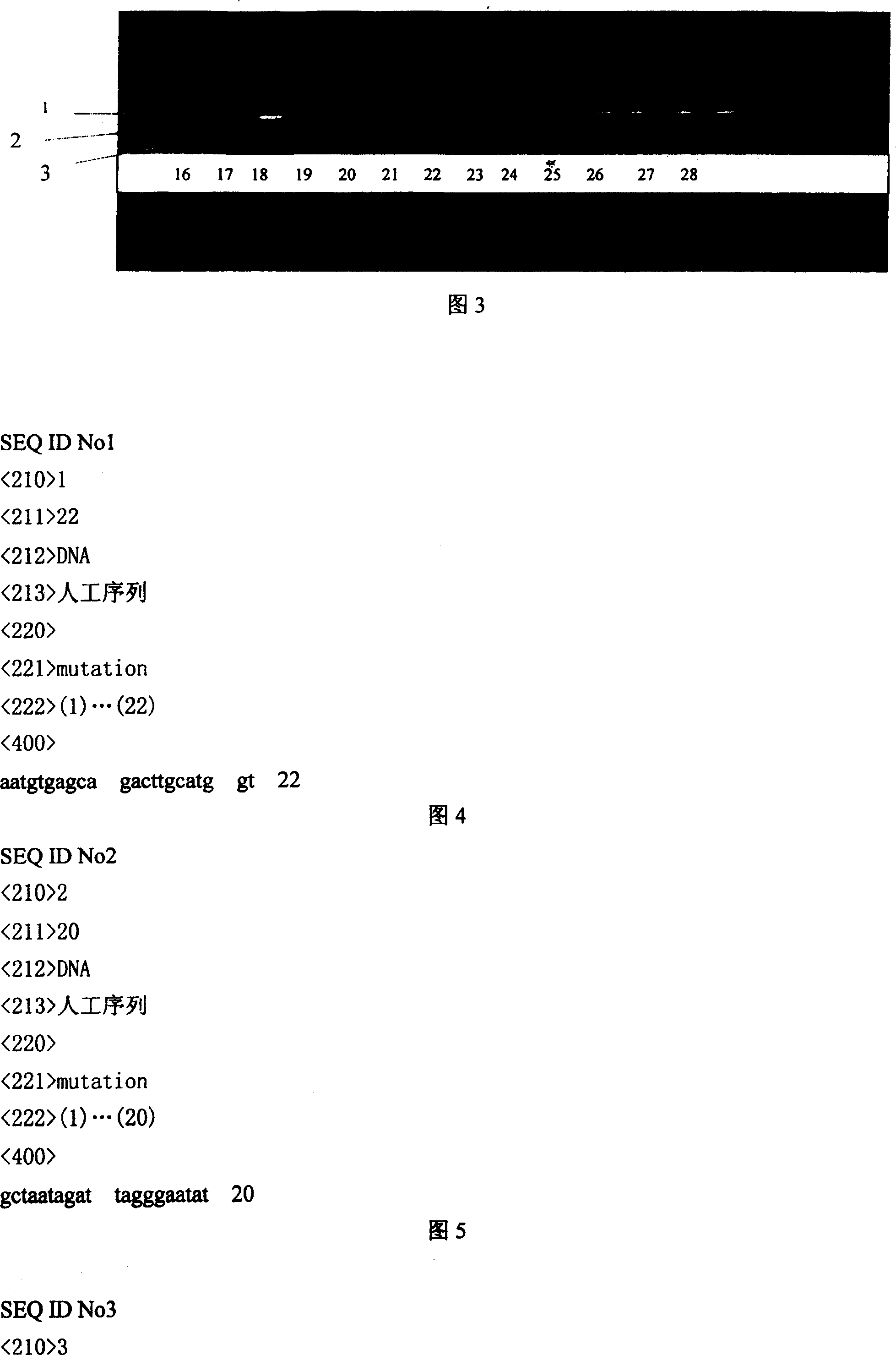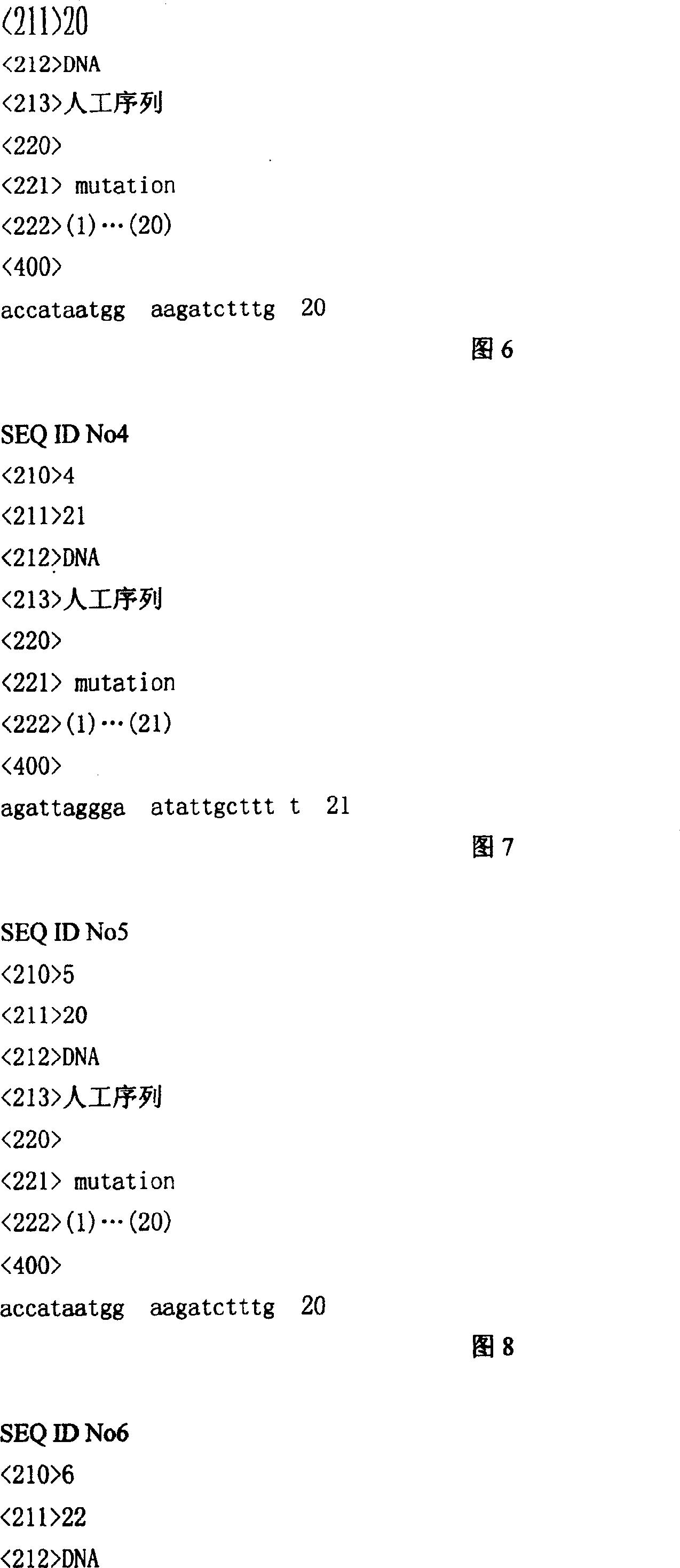Primer sequence for identifying cucumber ampho disease and its identification method
A cucumber downy mildew, primer sequence technology, applied in the field of DNA sequence, to achieve the effect of great application value
- Summary
- Abstract
- Description
- Claims
- Application Information
AI Technical Summary
Problems solved by technology
Method used
Image
Examples
Embodiment 1
[0029] A method for identifying resistance to cucumber downy mildew
[0030] (1) Extract cucumber genomic DNA; (2) Carry out PCR amplification, put into in the special-purpose thin-walled tube of PCR amplification: described cucumber genomic DNA 20ng, the nucleotide sequence 30ng described in SEQ ID No1 in the sequence table, sequence Nucleotide sequence 30ng, dNTP0.2mM, Mg described in SEQ IDNo2 in the list 2+1.5mM, 1 times PCR buffer, 1.0 units of Taq DNA polymerase, add sterile double distilled water to 20μl, put the special thin-walled tube for PCR amplification into the PCR instrument for amplification, and the amplification conditions are: 94°C Pre-denaturation for 200 seconds, denaturation at 94°C for 60 seconds, annealing at 55°C for 50 seconds, extension at 72°C for 90 seconds, 30 cycles, and extension at 72°C for 350 seconds, the amplification is complete; (3) Gel electrophoresis analysis of PCR amplification products : The amplified product is separated by electrop...
Embodiment 2
[0032] A method for identifying resistance to cucumber downy mildew
[0033] (1) Extract cucumber genomic DNA; (2) Carry out PCR amplification, put into in the special-purpose thin-walled tube of PCR amplification: described cucumber genomic DNA 15ng, the nucleotide sequence 20ng described in SEQ ID No1 in the sequence list, sequence Nucleotide sequence 20ng, dNTP0.15mM, Mg described in SEQ IDNo2 in the list 2+ 1.2mM, 1 times PCR buffer, 0.8 units of Taq DNA polymerase, add sterile double distilled water to 20μl, put the special thin-walled tube for PCR amplification into a PCR instrument for amplification, and the amplification conditions are: 94°C Pre-denaturation for 180 seconds, denaturation at 94°C for 60 seconds, annealing at 50°C for 40 seconds, extension at 72°C for 60 seconds, 25 cycles, and extension at 72°C for 300 seconds. Amplification is complete: (3) Gel electrophoresis analysis of PCR amplification products : The amplified product is separated by electrophores...
Embodiment 3
[0035] A method for identifying resistance to cucumber downy mildew
[0036] (1) extract cucumber genomic DNA; (2) carry out PCR amplification, put into in the special-purpose thin-walled tube of PCR amplification: described cucumber genomic DNA 30ng, the nucleotide sequence 40ng described in SEQ ID No1 in the sequence list, sequence Nucleotide sequence 40ng, dNTP0.25mM, Mg described in SEQ IDNo2 in the list 2+ 2.0mM, 1 times PCR buffer, 1.2 units of Taq DNA polymerase, add sterile double distilled water to 20μl, put the special thin-walled tube for PCR amplification into a PCR instrument for amplification, and the amplification conditions are: 94°C Pre-denaturation for 300 seconds, denaturation at 94°C for 60 seconds, annealing at 59°C for 60 seconds, extension at 72°C for 120 seconds, 35 cycles, and extension at 72°C for 420 seconds, the amplification is complete; (3) Gel electrophoresis analysis of PCR amplification products : The amplified product is separated by electrop...
PUM
 Login to View More
Login to View More Abstract
Description
Claims
Application Information
 Login to View More
Login to View More - R&D
- Intellectual Property
- Life Sciences
- Materials
- Tech Scout
- Unparalleled Data Quality
- Higher Quality Content
- 60% Fewer Hallucinations
Browse by: Latest US Patents, China's latest patents, Technical Efficacy Thesaurus, Application Domain, Technology Topic, Popular Technical Reports.
© 2025 PatSnap. All rights reserved.Legal|Privacy policy|Modern Slavery Act Transparency Statement|Sitemap|About US| Contact US: help@patsnap.com



